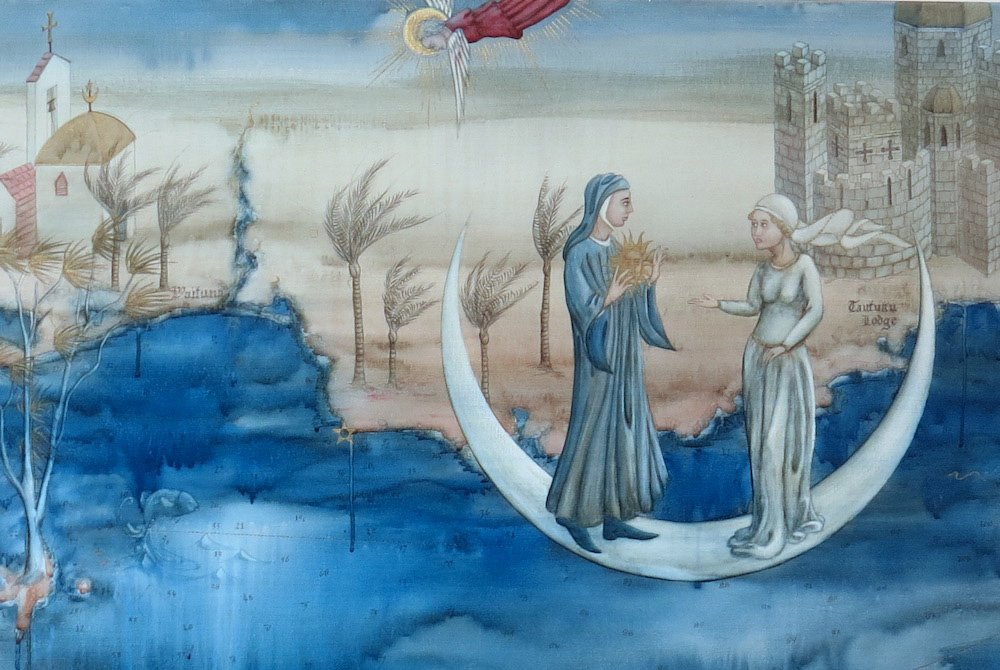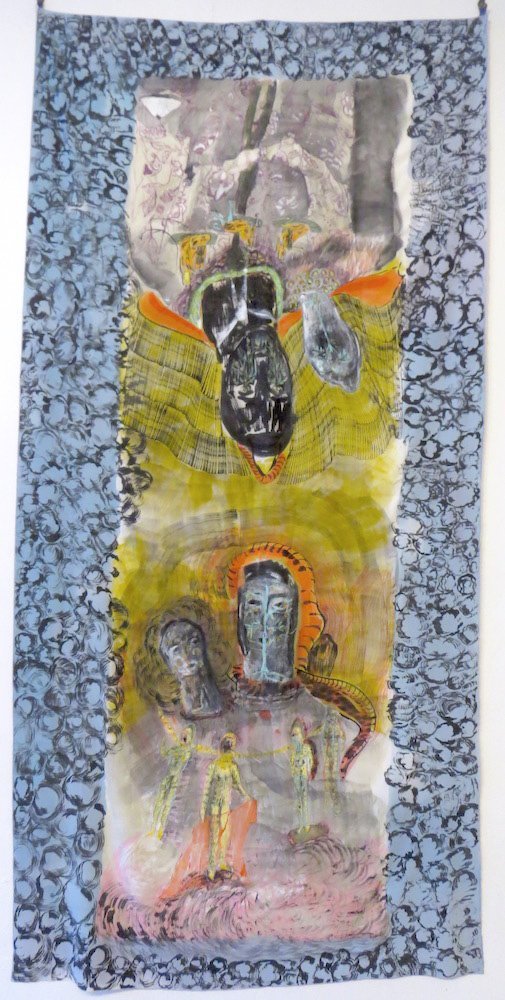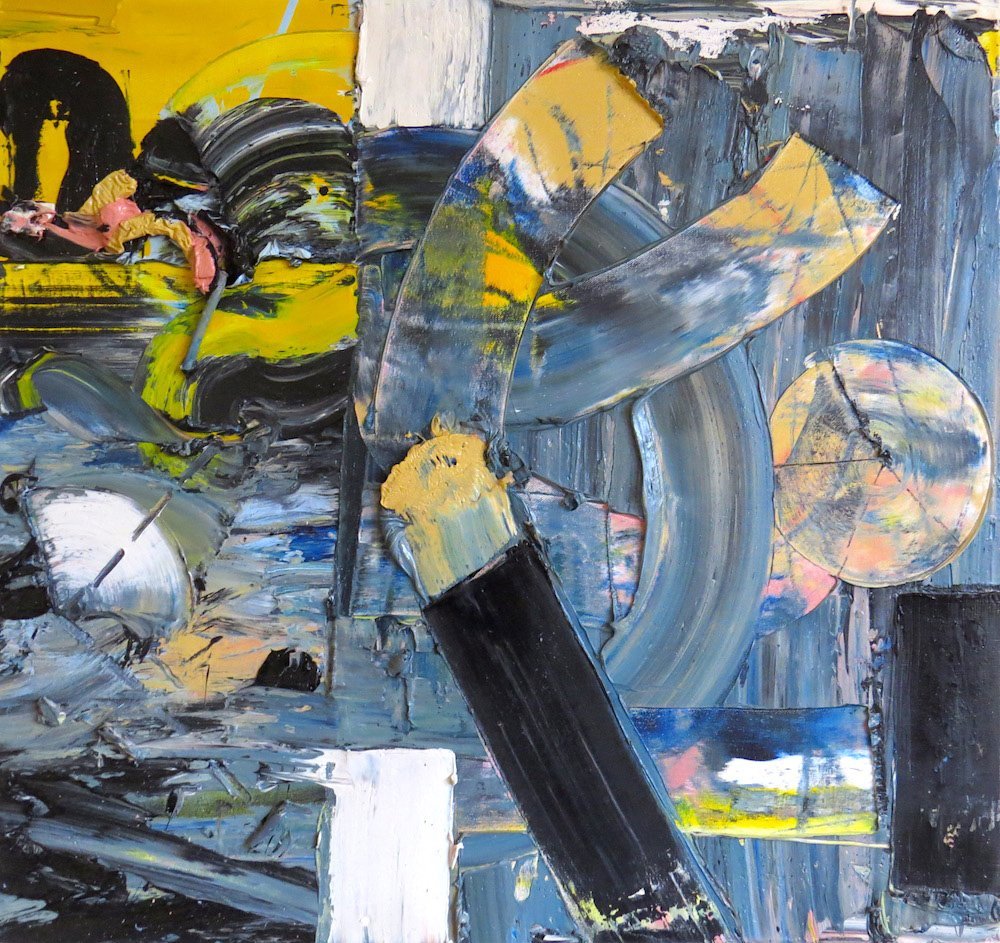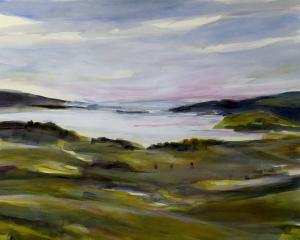
(Milford Gallery)
Milford Gallery is presenting a salon show featuring work by five artists, three of whom, while widely known elsewhere, have not been shown in Dunedin before.
The works of two of these artists sit easily and comfortably together. Roger Mortimer’s imaginative and thought-provoking New Zealand maps are created in an impressive neo-medieval style. His strong, narrative-filled canvases impressively combine New Zealand locations and history with early European art and fantastic literature. Nearby, Tony Lane’s enigmatic, mystical symbolist art creates a topographical space for imagination which also shows evidence of medieval European art at its base.
The paintings of the third "new" artist, Sandro Kopp, are far more visceral. The bold, bright impasto initially has the appearance of frenzied abstraction, but with continued viewing figures begin to emerge. This is perhaps most clear in the subtle nude form of The Rosenthaler Suite 24 (Simone), where the initial chaos of the paint slowly reveals its subject like the veils of a burlesque dancer.
The two remaining artists both add further weight to the display: Simon Edwards presents several strongly melodramatic coastlines, the oil of the paint shimmering to the point of pearlescence across the metal surface. Emily Siddell completes the exhibition with several huge and equally sparkling necklace forms, created beautifully from layers of glass.

(Brett McDowell Gallery)
As with several of the works at Milford, there is a sense of wilful temporal drift in Nichola Shanley’s work.
The artist’s display features hand-painted silk and boldly worked porcelain, with the central pieces of the exhibition — a series of eccentric and attractive lamps — created from a combination of the two media. Although these works employ electrically powered bulbs, it is clear that the intent is for them to appear as candleholders. The flamboyant lamp bases have a feeling of rococo grotesquery, yet the silken shades feel of a different age, possibly 19th-century chinoiserie or perhaps far older, the pieces somehow unsettling in their attraction.
A series of large silk wall-hangings, designed as giant scarves, have a far earlier feel, with designs that suggest medieval tapestries or playing card designs. The washes of ink across the silk give the pieces a delicate, watercolour-like feel. These silks are all hung from miniature ceramic figures. More of the figures are presented as a further part of the display, alongside several silk bags, created in collaboration with Kārena/Carran. The small porcelain figures, each a usable or decorative miniature shelf, have intriguing forms which suggest an array of influence, from church niche figures to Japanese netsuke.

(Fe29 Gallery)
Philippa Blair’s work, although nominally gestural abstraction, is filled with a private symbolic language which suggests the geographical awareness of place, history and topography which have inspired her work.
The paintings on display were largely created while the artist lived in the United States, in the grid-like urban uniformity, cosmopolitanism and deterioration of Los Angeles, and while visiting the windswept plains of the west, where the presence of the pre-European population is still strong. The artist’s symbolic representation of location is evident in the billowing wind-forms of Chinook and the grid-like streets of Angelus Place.
The sense of location is coupled with that of dislocation, the feeling of being "out of place", as the show’s title suggests. The exiled New Zealand artist’s thoughts of home are reflected in the memory work Black Swan. This and the similar Night Heron both suggest their subject through gentle arcs of paint to imply the serpentine necks of the birds.
There is a boldness in the use of mark-making in the work, notably in the impasto which carries the day in the epic diptych Mapa Blanca. Alongside the large oil and mixed-media pieces, smaller gouache works on paper allow the artist’s eye for colour balance to come to the fore.
By James Dignan



!["Flux" featuring Portraits of Geoff Dixon (2021–2025), acrylic on paper [installation view], by...](https://www.odt.co.nz/sites/default/files/styles/odt_landscape_small_related_stories/public/story/2025/07/1_macleod.jpg?itok=ywgJww50)








